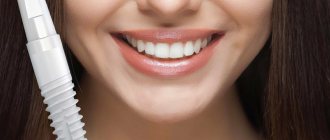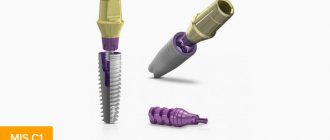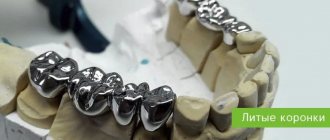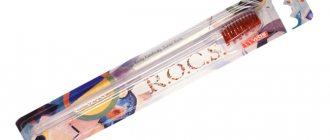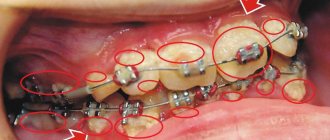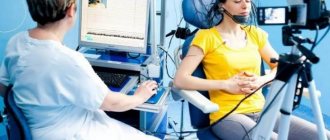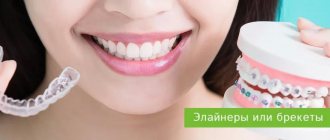3D in dentistry: what technologies are used?
The following 3D printing technologies are most often used in dentistry today:
- SLM. This is a laser melting technology for working with metal. It can be used to create braces and implants. A build plate is placed on the heated working platform of the printer, and metal powder is applied to the plate layer by layer. The laser beam scans sections of the layers. Once one layer is ready, the platform is lowered down to the thickness of one layer. This will be repeated until the last layer is printed.
- SLA. Laser stereolithography is used in areas where maximum precision of parts is important. The mesh platform is placed inside a container filled with liquid polymer. Under the influence of a laser, the polymer hardens in certain areas. The platform sinks down layer by layer. The finished print is placed in a bath with a special solution to remove unnecessary elements from it.
- LCD. The printer is equipped with a liquid crystal matrix through which light from LEDs passes. This matrix is similar to the one installed in smartphones we are used to. In this case, the luminous flux is dimmed by the display. Under the influence of a laser, the liquid photopolymer in the bath hardens layer by layer. Unlike SLA technology, the entire layer is illuminated instantly, and not at individual points, which significantly speeds up the printing process.
- LFS. Low power stereolithography is similar to SLA, but makes the printing process less complex and more economical. Formlabs has developed a unique light processing unit for this technology to achieve a flawless print surface. LFS printers can usually resume the printing process after a pause or unexpected stop without affecting the quality of the print.
ATTENTION. Trends in technology development are such that 3D printing is becoming less and less expensive and faster. Operating a printing device is becoming increasingly easier, and the accuracy and detail of finished prints is steadily increasing.
Here are examples of 3D printed dental products:
Obtaining a 3D model
To obtain three-dimensional models, professional and expensive equipment is used, which is highly accurate and easy to operate. It is important to note that practitioners use 2 methods of obtaining a workpiece for 3D printing:
1. Scanning a plaster cast. The doctor makes an impression, after which the latter is processed with a special device. The inconvenience lies in the increased time spent and increased requirements for revision.
2. Intraoral scanning. Devices like 3Shape Trios 4 or Shining DS-EX Pro take data directly from the patient’s jaw. This is faster, but the cost of such devices is higher.
3D printers and scanners in dentistry have improved every year, and their costs have decreased significantly. Therefore, today even small clinics have similar technologies.
Application of 3D printing in dentistry
3D printing is in demand primarily among orthodontists, surgeons, and prosthetists. They appreciate the following advantages of this technology:
- The production of models, aligners, implants and other products requires significantly less time than with the traditional method of their production.
- Financial costs are reduced, material consumption is reduced.
- All objects are obtained as accurately as possible, corresponding to the anatomy and individual needs of the patient. The printing process is fully automated - the human factor, which causes most defects, has been eliminated.
- If the product needs to be corrected, it is enough to make adjustments to its computer model (which only takes a few minutes).
- The model that suits the client can be stored for years in the form of a computer file. There is no need to store physical samples.
- Production volumes can be increased without hiring additional personnel.
- Learning how to use a 3D printer and its software is relatively easy. A clinic employee does not have to delve into all the technological nuances that do not directly relate to dentistry - manufacturers of printing devices have reliable and competent technical support services.
ATTENTION: 3D technologies in dentistry still remain exotic in our country. The very fact of their use gives the clinic a significant marketing advantage.
Modern dental prosthetics - European quality and long-term effect
Today we can say with confidence that thanks to the unique Cerec 3D computer technology, dental restoration and prosthetics in dentistry have reached a new level. What is this “22nd century technology”, as many experts call it, and what are its advantages?
Firstly
, this is a very fast service to patients. Any tooth, if it has a preserved root, can be restored using CEREC technology in 1-1.5 hours.
Secondly
, these are the prices for dental restoration. They will really pleasantly surprise you.
Aligners
The production of aligners in 3D occurs according to the following algorithm:
- The specialist makes a cast of the patient’s jaw from plaster and scans it. Alternatively, an impression can be taken using two-part silicone.
- In the software, based on a scan of the impression, the dentition in different states is modeled in phases: from the crooked position of the teeth to a perfectly straight smile.
- The file is sent for printing. Using the printed modified models, the aligners are vacuum formed.
The doctor checks the quality of the print and hands the aligners to the patient.
What are the benefits of 3D printing in the production of aligners?
3D printing is more profitable than traditional aligner production for at least three reasons:
- This is more economical from a financial point of view.
- Treatment can begin the very next day after the jaw impression is scanned.
- If the aligner turns out to be defective or deteriorates during use, it can be replaced literally in one day and with minimal expense.
For the patient, all this creates additional psychological comfort.
What equipment and software is needed to make aligners?
The following programs are most in demand for the production of aligners:
- 3D Shape. Functional and easy-to-use software, the only drawback of which is the need for an annual renewal of the paid license.
- Maestro 3d Ortho Studio. The license for this program is purchased only once, and then additional modules can be purchased for the software. Those options that were present in the program initially will remain available even if the user does not purchase new modules.
- "Avantis". This is Russian software whose license does not include a module for outputting .STL files. You will have to pay extra for this module separately.
ATTENTION. All these programs belong to the CAD category, that is, autonomous design systems.
Here's what the 3D printed aligners look like:
Bracket systems
With the traditional approach, the orthodontist places braces on each tooth as he sees fit. But the computer can perform a more accurate calculation and suggest on which part of the tooth it is optimal to place the brace. Using 3D technology, a tray is first printed, on which the bracket system is then placed. This approach allows you to increase the effectiveness of treatment and reduce the duration of wearing braces.
ATTENTION. Braces are gradually becoming a thing of the past, as they are too conspicuous, and their glue deteriorates tooth enamel. In the future, they will likely be completely replaced by aligners.
3D prosthetics in an hour
Thus, your orthopedic dentist can create for you a crown, inlay or onlay from modern ceramic material in just an hour.
After turning and polishing the prosthesis, fitting is carried out and the prosthesis is immediately installed. You return home with a completely restored tooth. Thanks to 3D prosthetics, you can forget about weeks of waiting, the unpleasant procedure of taking impressions, temporary dentures, and so on. If your clinic has CEREC equipment, then just one visit to the doctor will be enough for you. You can also be sure that the human factor and possible errors due to it in the manufacture of the prosthesis are excluded - all calculations are performed by a computer, thanks to which the prosthesis will fit you perfectly, which practically reduces the likelihood of complications after prosthetics to zero.
3D printer in dentistry for the production of implants for prosthetics
Today, surgical templates are successfully printed using 3D printers. They allow you to drill at exactly the right angle, ensure correct positioning of the implant and avoid complications. First, the patient comes to the doctor to take an impression and receive a referral for a CT scan. Implantation itself occurs in the second session.
Manufacturing of surgical templates
Templates must be made exclusively from solid transparent materials that can withstand high temperatures. They are usually modeled in the Implant Assistant program, which provides high-quality technical support in Russian.
Advantages of using surgical guides and main problems
When installing implants, an inexperienced doctor can harm the patient’s health if he accidentally:
- will drill at the wrong angle;
- will drill too deep or not deep enough;
- does not position the implant accurately.
In order for the bone tissue to recover after such an error, it sometimes takes up to 12 months to wait. If you make a template, the drilling will be done as accurately as possible. 3D printing can provide precision that is currently unattainable by any other cost-effective technology.
Dental models
Over 90% of models in dentistry today are made by hand. This is long, dirty, painstaking work that can never be compared to automated production in terms of accuracy.
Some components - for example, clasp dentures - can only be made by casting or 3D printing. It is impossible to use a cutter in this case, since the part is too thin. When casting, the probability of defects is too high; the product may turn out to be insufficiently elastic or strong. In 3D this risk is eliminated.
ATTENTION . Products printed on a 3D printer will always be homogeneous and monolithic. This is extremely important for crowns: if they turn out to be porous, the ceramics will begin to bounce off. A well-established printing process will avoid this undesirable consequence.
3D Modeling
In their practice, NKclinic specialists often encounter complex clinical cases. We are able to achieve the highest success rates thanks to the excellent equipment of the clinic with the latest generation equipment, rich experience and close interdisciplinary cooperation of orthopedic doctors, therapists, orthodontists, maxillofacial surgeons and 3D design engineers.
Three-dimensional modeling is a relatively recent scientific development, without which it is difficult to imagine the work of orthodontists and maxillofacial surgeons. NKclinic uses the creation of 3D templates for:
- Designing bone grafting;
- Surgeries to restore the midface;
- Dental implantation;
- Microsurgical operations;
- Complex maxillofacial surgical interventions.
Three-dimensional computer modeling of templates for total implantation
Installation of osseointegrated implants is not an easy procedure, requiring lengthy preparation, careful calculations, expert craftsmanship and patient patience. To achieve a guaranteed result that will remain with the patient for many years, it is necessary not only to install an implant, but to do it as physiologically as possible: the chewing load should be evenly distributed on the implants to avoid lateral loads. Even minor errors in choosing the location of implants can lead to late disintegration and resorption of bone tissue.
In the absence of teeth, it is difficult to determine landmarks; one has to take into account the thickness of the bone, the position, and functionality of future teeth. This is where 3D modeling comes in! During the operation, the surgeon does not need to calculate the ideal location of the implants and their sizes - he can simply follow a pre-created template.
Thanks to computer technology and the qualifications of NKclinic specialists, the survival rate of implants reaches almost 100%, and extremely rare cases of failure are associated with patients’ non-compliance with the regimen and doctor’s recommendations.
How is controlled implantation performed?
For complex implantation, atrophy of the bone tissue of the alveolar processes, and a large volume of orthopedic reconstructions, virtual three-dimensional construction of the dentition is used. The implant surgeon, based on the 3D model, performs a preliminary virtual operation and receives a visual demonstration of the future result, which is also agreed with the patient. This allows you to avoid any kind of surprises for both the doctor and the patient. This is why it is called “controlled implantation”.
Computer analysis of the initial data and mathematical calculations determine the optimal positioning of future implants, and a virtual template is designed. Using a 3D printer, the created model is “printed” on a material medium - most often a polymer structure is made that can be used by a surgeon.
If the jaw is completely toothless, a computed tomography scan of the jaws, wax modeling of future teeth and scanning of them are performed. Combining CT data with a scan of virtual teeth provides the basis for designing a stereolithographic template.
In addition, 3D modeling allows you to create future temporary orthopedic structures even before surgery. Immediately after the implantation process, the patient can use temporary crowns supported by implants, which has the most beneficial effect on psychological and aesthetic comfort and allows him to lead a full lifestyle.
3D computer planning in orthognathic surgery
NKclinic is visited by patients not only with aesthetic smile defects, but also by people with severe consequences of extensive trauma to the maxillofacial area, facial deformities due to oncology operations. Successful orthognathic intervention to correct such serious disorders certainly requires orthodontic preparation of the patient.
The visual effect of wearing special structures and the operation itself is simulated using interactive 3-dimensional computer planning programs Nemotec and Dolphin 3D.
Each stage of teeth movement and changes in facial configurations can be tracked in detail, and the intermediate and final results can be accurately predicted. Computer processing of initial data and digital planning of orthodontic and surgical procedures based on it help to minimize risks and achieve the goal.
Close cooperation between competent orthodontists, surgeons and 3D engineers allows us to take on the most difficult cases and guarantee success!
Which material to choose?
In the dental industry, the most popular filaments are from NextDent, Detax, HARZ Labs and Formlabs. In their extensive palettes, it is easy to choose the shade that perfectly matches the natural color of the patient’s gums and teeth.
NextDent (Holland)
The NextDent line of dental filaments includes 30 items, which is a record for the industry. All filaments from this manufacturer are biocompatible and certified. The cost of one package of the product averages 30,000 rubles.
Detax (Germany)
This brand’s line includes 13 filaments, each of which is recommended for use in creating a specific type of product: aligners, implants, jaw casts, and so on. The average cost of one package is 20,000 rubles.
HARZ Labs (Russia)
HARZ Labs' specialized line of products for dentists is called Dental. It contains the following types of filaments:
- for modeling surgical templates;
- to create demonstration models of temporary crowns and bridges;
- for creating demonstration dental models and master models;
- radiopaque polymer for the production of CT templates, facilitating the subsequent alignment of the scanned jaw with a computed tomogram;
- for the production of models used for direct casting;
- for the production of demonstration dental models of gums;
- for making transparent models.
The cost of one package of polymer is on average 12,000 rubles.
Formlabs (USA)
The Formlabs line of dental filaments includes 6 items intended for the production of:
- orthodontic and diagnostic models;
- templates and guides for drilling;
- night guards;
- cast crowns and removable denture frames;
- clear aligners and orthodontic models;
- trial and permanent dentures.
The average cost of one package is 15,000 rubles.
Which 3D printer should a dentist choose?
The main requirements for a 3D printer for dentistry are high printing accuracy and flawless surface treatment of products. Dentists can use the same printer models as jewelers. However, some manufacturers produce printing devices that are initially focused on working with biomaterials.
Below are the technical characteristics and main advantages of four 3D printers, especially suitable for use in dentistry. All of them are distinguished by their compact dimensions, affordable cost and attractive design. The combination of a streamlined silhouette and bright colors is more reminiscent of household and kitchen utensils than of production processes. Such printers can be easily placed in the office of a small dental clinic.
Formlabs Form 3 3D printer
- Technology: LFS.
- Working surface dimensions: 145 mm × 145 mm × 185 mm.
- Weight: 17.5 kg.
- Layer thickness: from 25 microns.
- Printing accuracy: 25 microns in X and Y axes.
- Estimated cost: 340,000 rubles.
For Formlabs Form 3, a dedicated light processing unit has been developed with a compact lens and mirror system to ensure maximum accuracy and successful print repeatability. The 250 mW laser passes through a spatial filter, resulting in an exceptionally clean laser spot with a diameter of 85 µm. The parabolic mirror is responsible for the fact that printing is carried out strictly perpendicular to the plane of the platform.
Formlabs Form 3 3D printer
- Laser spot diameter 85 µm
- Laser wavelength 405 nm
- Laser 1x250 mW
- LFS stamp
- Working chamber area 145x145x185 mm
- Materials used Photopolymer
- Layer thickness from 25 microns
- Display Touch 5.5″ 1280 × 720
- Interfaces Wifi;Ethernet and USB
- Price 367,000 rub.
Go to product
The print scale and power are constantly adjusted by optical sensors, which can also detect dust. In order to switch from one polymer to another, the cartridges only need a few seconds. The user can change the optical window, rollers and light processing unit independently, without involving technical specialists. This greatly simplifies the process of operating and maintaining the printer.
Formlabs Form 3B 3D printer
- Technology: LFS.
- Dimensions of the working surface: 145 mm × 145 mm x × 185 mm.
- Weight: 17.5 kg.
- Layer thickness: from 25 microns.
- Printing accuracy: 25 microns in X and Y axes.
- Estimated cost: 385,000 rubles.
Formlabs Form 3B is new for 2022. This model differs from Formlabs Form 3 in that it was initially optimized for working with biocompatible materials. It uses the same advanced light processing unit, and the modular system ensures stability and easy scalability of production. According to the manufacturer, LFS technology allows you to create 2-3 times more prints in one go than DLP. Labor and time costs are reduced by up to 55% compared to DLP.
Formlabs Form 3B 3D printer
- Dimensions, mm 17.5
- FORMLABS PREFORM software
- Laser spot diameter 85 µm
- Laser wavelength 405 nm
- Material Photopolymer
- Laser power 250 mW
- LFS stamp
- X and Y resolution 25 µm
- Working chamber area 145x145x185 mm
- Layer thickness from 25 microns
- Display 5.5″ touch, 1280 × 720
- Interfaces Wi-Fi (2.4, 5 GHz), Ethernet (1000 Mbit), USB 2.0
- Price 420,000 rub.
Go to product
Formlabs has developed specialized filaments for each area of dentistry. They are supplied in convenient cartridges that the user can easily change independently. Form Wash and Form Cure post-processing tools ensure flawless print quality. Support requests are processed by staff who specialize specifically in the use of 3D printing in dentistry.
Phrozen Sonic Mini
- Technology: LCD.
- Working surface dimensions: 120 mm × 68 mm × 130 mm.
- Weight: 4.5 kg.
- Layer thickness: from 10 microns.
- Printing accuracy: 62 microns along the X and Y axes, 10 microns along the Z axis.
- Estimated cost: 32,900 rubles.
Phrozen Sonic Mini is considered a printer for hobbyists and beginners. It successfully compensates for its low resolution with more intense UV radiation, due to which the layers harden faster. The monochrome matrix of the device requires replacement every 2000 hours, and the RGB analogues, which provide higher resolution, have to be changed every 500 hours. In addition, the monochrome nature of the matrix ensures printing speeds of up to 50 mm/h.
Phrozen Sonic mini 3D printer
- Dimensions, mm 250x250x330
- Weight, kg 4.5
- UV wavelength 405 nm
- Light source UV LED 40 W
- LCD printing
- Supported software Chitubox, Phrozen OS
- Z-axis resolution 10 µm
- X and Y resolution 62 µm
- Working chamber area 120x68x130 mm
- Speed 50 mm/hour
- Layer thickness from 10 microns
- LCD display 5.5″ 1920×1080
- Interfaces USB, microSD
- Price 34,900 rub.
Go to product
The printer screen is durable, resistant to high temperatures and pressure. The device's energy consumption is extremely economical, only 35 W, so it did not require an active cooling system. During the printing process, the printer does not make noise or vibrate, so the dentist can safely place it on his desk next to the computer.
Modeling and printing: what you need to know?
Modern 3D technologies are accompanied by a rigid sequence that includes:
1. Obtaining a three-dimensional model. Printing is done on the basis of a digital file that shows the proportions, color palette, and relief of the future workpiece. To create it, special scanners are used that take measurements and convert the resulting data into digital format.
2. Improvement via software. Professional 3D scanners are not perfect enough; deviations may appear during data acquisition, which are eliminated in special-purpose programs. In a number of industries, including medicine, software corrects defects independently thanks to an intelligent system.
3. Print. A special 3D printer for dentistry produces a prosthesis or other workpiece, which is subsequently used for treatment.
Let's consider some technical aspects of each stage, including the choice of material.
